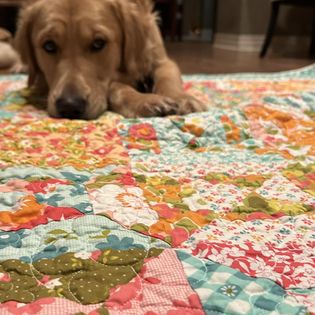
Longarm Quilting 101: Mastering the Basics
Longarm quilting is a versatile and rewarding craft that allows quilters to create stunning quilts with ease and precision. Whether you're a seasoned quilter looking to expand your skills or a beginner eager to learn, mastering the basics of longarm quilting is the first step toward creating beautiful, professional-quality quilts. Enjoy the accomplishment of completing your quilt projects from start to finish!

- Understanding Longarm Quilting Machines: Longarm quilting machines are specially designed for quilting large projects such as quilts, wall hangings, and even garments. Unlike traditional sewing machines, longarm machines feature extended sewing arms and are typically mounted on frames to accommodate bulky quilts. These machines come in various sizes and configurations, ranging from home-use models to commercial-grade machines used by professional quilters. Take part in classes, opportunities to test drive a machine and even opportunities to rent a longarm to build your comfort level. The great news is that there is a ton of information, test drive opportunities and many You-tube videos that provide excellent information.
- Setting Up Your Longarm Quilting Workspace: Before diving into your first longarm quilting project, it's essential to set up a dedicated workspace. Choose a well-lit and spacious area where you can comfortably maneuver your longarm machine and organize your quilting supplies. Ensure that your longarm machine is properly assembled and positioned for optimal quilting efficiency, with easy access to controls and attachments. Our favourite tool is “Zingers” from Handiquilter. They attach your scissors to you for easy access.

- Mastering Quilting Techniques: Longarm quilting offers quilters a wide range of techniques for achieving stunning results. From free-motion quilting to ruler work and pantograph designs, there are endless possibilities to explore. Start by practicing basic quilting motifs such as stippling, meandering, and swirls to build your confidence and muscle memory. Gradually experiment with more intricate designs and combinations of techniques as your skills improve. The best place to start is now … with a quilt sandwich just begin …. find a studio that offers opportunities for education and practice. Longarm quilting is a great skill that improves as you practice.
- Choosing the Right Thread and Batting: Selecting the right thread and batting is crucial for achieving the desired look and feel for your quilt. Consider factors such as thread weight, color, and fiber content when choosing thread for your project. Polyester, cotton, and silk are popular choices for quilting thread, each offering unique characteristics and benefits. Similarly, explore different types of batting to determine the loft, drape, and warmth that best suit your quilt. Common batting materials include cotton, polyester, wool, and bamboo, each with its own set of qualities and considerations. I personally love Pelon 80-20 batting blend (80 cotton and 20 polyester) it gives my quilts just the right amount of loft, lift and dimension to my quilts.
- Loading and Quilting Your Quilt: Loading a quilt onto a longarm quilting frame requires careful attention to ensure smooth and even tension. Begin by attaching the backing fabric to the frame, making sure it is taut and wrinkle-free. Next, layer the batting and quilt top, smoothing out any wrinkles or creases. Secure the layers in place with clamps or pins, ensuring that the quilt top is centered and straight on the frame. Once loaded, you can begin quilting your project, experimenting with different quilting patterns and techniques to achieve your desired design. This process isn’t difficult once you learn it and there is a large volume of education available for you to access. I personally spent time at a certification class at local studio and then rented their longarm for a few months before I took the leap and purchased one for myself! Find a supportive studio with staff that can answer your questions and quilt along with you.


- Finishing Touches and Care: After quilting is complete, carefully remove your quilt from the longarm frame and trim any excess batting and backing fabric. Finish the edges with binding or facing to create a clean, professional finish. Take care to secure any loose threads, embellishments, and give your quilt a final press to smooth out any wrinkles. Finally, be sure to follow proper care instructions to preserve the beauty and integrity of your quilt for years to come.
Longarm quilting offers quilters of all skill levels a unique opportunity to create stunning quilts with ease and precision. By mastering the basics of longarm quilting, from machine setup and quilting techniques to thread and batting selection, you can embark on your quilting journey with confidence. With practice, patience, and a spirit of exploration, you'll soon be creating beautiful quilts that are sure to be cherished for generations to come.
If you have any questions, please reach out to us at Thread the Needle Quilt Studio – we are thrilled share our love of quilting with you. Looking forward to seeing you at the studio!


